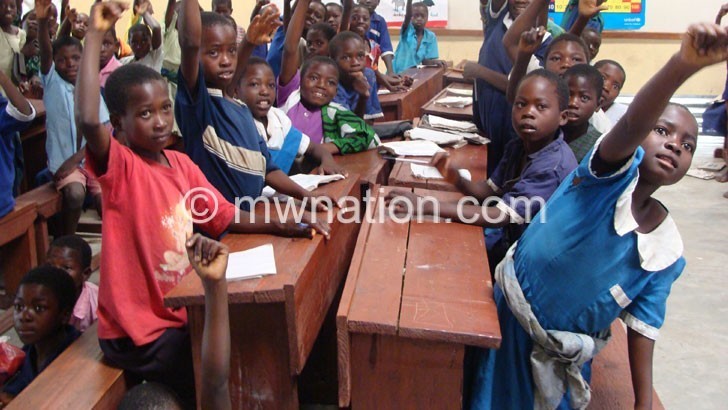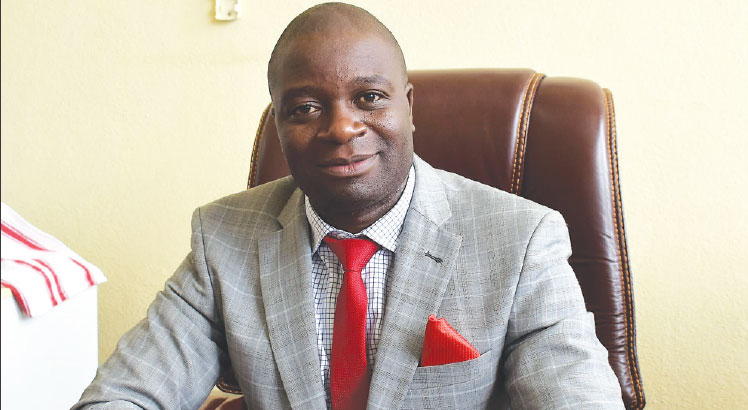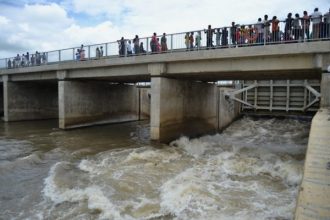Controversy over teacher-pupil ratio
Ministry of Education, Science and Technology (MoEST) has sparked controversy that the teacher to pupil ratio in the country has reduced to 1: 65, with education rights activists questioning the authenticity of the figure.
Two education rights activists, Benedicto Kondowe who is executive director of Civil Society Education Coalition (Csec) and educationist Steve Sharra, yesterday disputed claims by MoEST Principal Secretary Justin Saidi that the ratio has reduced from one teacher to 79 learners in 2014 to one teacher against 65 now following the recruitment of 48 000 new primary school teachers during the period.

Saidi said that in the next two years, government plans to further reduce the ratio to 45 learners per teacher in primary schools. Currently, Malawi’s recommended ratio is one teacher to 60 learners.
But reacting to the statement in an interview yesterday, Kondowe said the claim does not reflect the reality on the ground. He observed that Malawi has been struggling to meet even the basic ratio of one teacher to 60 pupils over the years.
He said: “Even during the last joint [education] sector review held in October last year, the teacher to pupil ratio that came out was at one to 77. I wonder where the 65 is coming from. Surely, the PS should know better.”
Kondowe said the teacher-pupil ratio is worse in rural areas where one teacher sometimes handles as high as 200 learners or more.
He said: “We have a long way to go. If trained teachers are taking about eight months before they are recruited, how can we reduce the teacher to pupil ratio? Unless we remain consistent with our desire to reduce this ratio, the said progress we are making is not worth celebrating.”
On his part, Sharra said while it is possible that with the recent recruitment of teachers in 2018 the teacher-pupil ratio might have reduced as claimed by government, the problem with such numbers is that they mask the situation in individual schools on the ground.
He said: “Most schools put all their resources in Standard Eight to maximise chances for selection to secondary school because we have much fewer secondary schools compared to primary schools.
“That [arrangement] skews the national teacher-pupil ratio because in many schools, the Standard Eight ratio is much better than the ratio for standards one to three.”
The teacher-pupil ratio is calculated by dividing the number of teachers against the number of learners.
Sharra said the most recent ratio as provided by government and is contained in the 2018 Annual Education Statistics Bulletin that is also known as the Education Management Information System (Emis), put the number of learners at five million against 71 000 teachers; hence, giving a teacher to pupil ratio of 1:70.
But Saidi said government is committed to improving quality education as demonstrated by the construction of three additional primary school teacher training colleges in Rumphi, Mchinji and Chikwawa as well as the establishment of Nalikule College for Secondary School Science Teachers in Lilongwe.
The PS said: “The teacher-pupil ratio needs to be reduced and I am happy that government is putting much effort on that one.”
Saidi said government has secured funding for the construction of about 200 secondary schools with seven earmarked for each of the country’s 28 districts.
In announcing the development last week, Education Minister Bright Msaka said government wants to develop youths through education to become dependable tools for the attainment of national development goals.
Minister of Finance, Economic Planning and Development Goodall Gondwe is on record as having said that Malawi abolished tuition fees in public secondary schools as a condition for the country to benefit from a United States of America (USA) grant for construction of additional schools.
The National Education Sector Plan (Nesp), which covered the period 2011 to 2019 and has since been extended to 2022, targeted a ratio of 1:40 by 2018. However, the target was missed.





